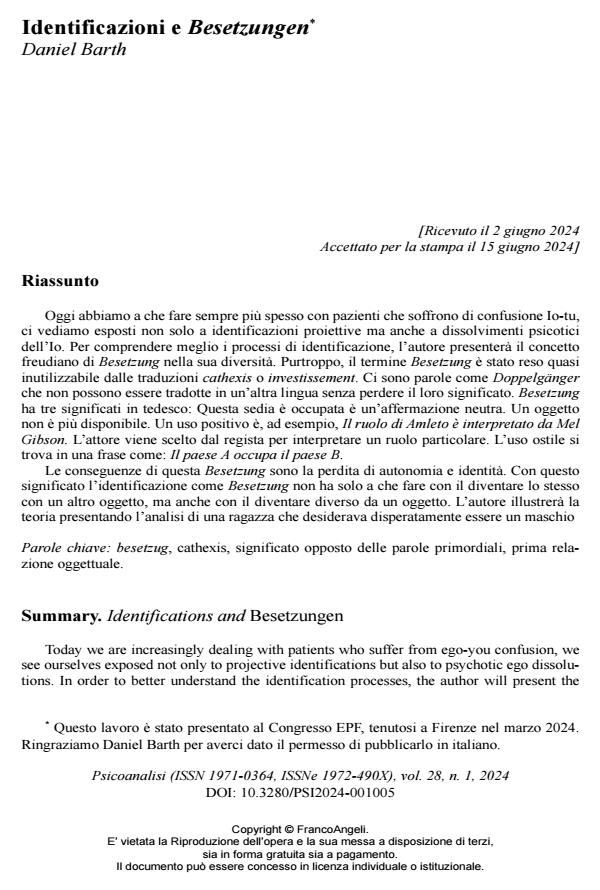Identifications and Besetzungen
Journal title PSICOANALISI
Author/s Daniel Barth
Publishing Year 2024 Issue 2024/1
Language Italian Pages 13 P. 59-71 File size 185 KB
DOI 10.3280/PSI2024-001005
DOI is like a bar code for intellectual property: to have more infomation
click here
Below, you can see the article first page
If you want to buy this article in PDF format, you can do it, following the instructions to buy download credits

FrancoAngeli is member of Publishers International Linking Association, Inc (PILA), a not-for-profit association which run the CrossRef service enabling links to and from online scholarly content.
Today we are increasingly dealing with patients who suffer from ego-you confusion, we see ourselves exposed not only to projective identifications but also to psychotic ego dissolutions. In order to better understand the identification processes, the author will present the Freudian concept of Besetzung in its diversity. Unfortunately, Besetzung has been rendered almost useless by translations into cathexis or investissement. There are words like Doppelgänger that cannot be translated into another language without losing their meaning. Besetzung has three meanings in German: This chair is occupied is a neutral state-ment. An object is no longer available. A positive use is, for example, The role of Hamlet is played by Mel Gibson. The actor is casted by the director to play a particular role. The hostile usage is found in a sentence: Country A occupies country B. The consequences of this Besetzung are loss of autonomy and identity. With this 3 meaning, Besetzung like identification has not only to do with becoming the same with another object but also with becoming different to an object. The author will illustrate the theory by presenting an analysis of a girl who desperately wanted to be a boy.
Keywords: besetzung, cathexis, antithetical meaning of primary words, first object relation.
Daniel Barth, Identificazioni e Besetzungen in "PSICOANALISI" 1/2024, pp 59-71, DOI: 10.3280/PSI2024-001005